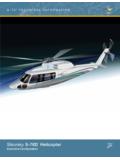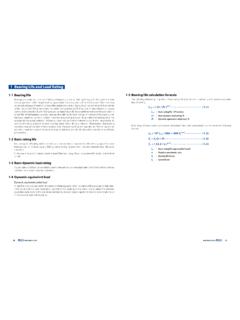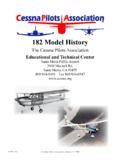Transcription of MANOEUVERS - Ayrshire Driving Solutions
1 MANOEUVERS . What are the reasons for manoeuvres in a Driving test? To demonstrate to the examiner that, whilst using forward and reverse gears, you can;. 1. Control the car at low speeds displaying good tight clutch and brake control. 2. Demonstrate reasonable accuracy. 3. Display good effective observations and show consideration and awareness for other road users. You will be asked by the DSA examiner to carry out one of the following manoeuvres during your test: 1. Reverse parallel parking. 2. Reverse into a parking bay. 3. Left-hand reverse. 4. Right-hand reverse.(Not normally used on learner tests). 5. Turn in the road. All manoeuvres should be carried out at slow crawling pace. (The clutch should never come fully past the biting point.)
2 When reversing, you must look back for more than about 70% of the time taken to carry out the manoeuver and make good use of your mirrors. Scan your observations; this must be done regularly so you are fully aware of any road users coming into your area. If you see a road user do not continue until you are sure there is no danger. All round effective observations MUST be used. If at any time you know you are going well offline, or if you are going to hit a kerb, stop and move forward enough to correct the problem. Remember to carry out full observations before moving forward. It is a good idea to open your window during the manoeuvres so you can hear other road users as well as see them. Remember to close it before you drive off. 1. You may also remove your seat belt when carrying out a manoeuvre which includes reversing to allow you to turn easier in the seat.
3 However; you MUST remember to re-fasten your seat belt. If you drive off after completing the manoeuvre without your seat belt on, you will have committed a serious Driving fault for which you will fail your Driving test. All the manoeuvres must be carried out at a safe, legal and convenient location. The DSA examiner will chose the location. Remember for all the following routines are a framework, you are not a robot and will sometimes slightly misjudge speed, distance or angle. So you must be able to problem solve. You will be taught that how to do this in car. Always be: VERY SLOW / VERY ACCURATE / VERY AWARE. PARALLEL PARKING. The DSA examiner will tell you: This is the parallel parking exercise. Will you drive forward and stop alongside the vehicle ahead, then reverse in and park reasonably close to, and parallel with, the kerb.
4 Try to complete the exercise within 2 car lengths from the vehicle. Drive on when you are ready . Use the Prepare Observe and Move ( ) routine to move off. 1. Using the MSM routine, stop your car just past the front of the target car (the one you are going to park behind!) and not more than one meter away. Any more than a meter and you may be causing an obstruction. 2. Immediately select reverse gear to inform other road users of your intention and apply the handbrake. 2. 3. 6 point check from right to left, checking for pedestrians as well as other road users. If there are any pedestrians or other road uses in the area, wait until you are sure it is safe to continue. 4. Looking over your left shoulder out of the rear window, release handbrake and reverse slowly using tight clutch control for level or uphill reverse and brake control for downhill reverse.
5 Remember to pause on occasions, scan observations and react to road users safely. Continue until the back of your car is level with the back / front target car (Dependant on what way it is facing) You will be given a reference point in-car. This is your turning point. 4. Pause and carry out a 6 point check from right to left, as when you steer left the nose of your vehicle will swing out. If safe to do so, turn the steering wheel one turn (360 degrees) to the left. 5. Continue reversing slowly, remember to pause on occasions and scan observations. When your car is at 45 degrees to the to the kerb lines, turn the steering wheel one turn (360 degrees) to the right, straightening the wheels. 6. Continue straight back, remember to pause on occasions and scan observations.
6 When your car is in the correct position (Reference point will be given in-car) turn the steering wheel one turn (360 degrees) right. 7. Continue reversing slowly, remember to pause on occasions and scan observations. Just before the car becomes parallel to the kerb turn the steering wheel one turn (360 degrees) to the left to straighten the car. 8. Handbrake on and gear lever into neutral. Await instructions. LEFT HAND REVERSE EXERCISE. This manoeuvre is used to turn your car around on a major road when Driving round the block is not an option. This manoeuvre should only be done from a major road to 3. a minor road. The DSA examiner tell you: The road on the left is the one I want you to reverse into. Drive past it and stop. Then reverse back in to the road for a reasonable distance keeping reasonably close to the kerb.
7 Drive on when you are ready . Use the routine to move off. 1. As you pass the junction on the left, look at the degree of the turn and make sure there are no obstructions in the minor road which will prevent you from reversing safely into it, parked cars, skips etc. 2. Using the MSM routine, stop about 3 car lengths past the junction, and about meter from the kerb for a sweeping corner, and 1 meter for a 90 degree corner. 3. Immediately select reverse gear to inform other road users of your intention and apply the handbrake. 4. 6 point check from right to left, checking for pedestrians as well as other road users. If there are any pedestrian, vehicles or other road uses in the area, wait until you are sure it is safe to continue. 5. Looking over your left shoulder out of the rear window, release handbrake and reverse slowly back at crawling pace, using clutch control for level or uphill reverse and brake control for downhill reverse.
8 Remember to pause on occasions, scan observations and react to road users safely. 6. Stop the car at the turning point. For a sweeping corner, this is when the rear wheels are in line with the join of the last straight kerb stone of major road and the first curved kerb stone of the side (minor) road. For a 90 degree corner this will be half a meter before that join. Below is the reference point you will use to keep the car parallel to the kerb during you initial turn. Full explanation will be given in-car. 4. 7. Pause and carry out a 6 point check from left to right, as when you steer right the nose of your vehicle will swing out. If it is safe, look over your left shoulder and continue reversing and immediately turn the steering wheel between to one full turn (360 degrees) left for a sweeping corner and a full lock left for a 90 degree corner.
9 (Corners are not perfect curves so you will need to make alterations to your steering as you negotiate the turn. ). 8. Remember to pause on occasions, scan observations and react to road users safely. Just before you are parallel to the kerb steer to the right to straighten the car. The amount of right steering will depend on how much left steering you have used to go round the corner. Use a reference point similar to the one below to ensure you continue parallel to the kerb. Full explanation will be given in-car. Stop 3 to 4 car lengths into the side (minor). road. 9. Handbrake on and gear lever into neutral. RIGHT HAND REVERSE EXERCISE. This manoeuvre is used to turn your car around on a major road when Driving round the block is not an option.
10 This manoeuvre should only be done from a major road to a minor road. The DSA examiner tell you: The road on the right is the one I want you to reverse into. Drive on the left until you have passed it, then move across to the right and stop. Then reverse back into the road for a reasonable distance keeping reasonably close to the right hand kerb. Drive on when you are ready . Use the routine to move off. 1. As you pass the junction on the right look at the degree of the turn and make 5. sure there are no obstructions in the minor road which will prevent you from reversing safely into it parked cars, skips etc. 2. Using the MSM routine stop about 3 car lengths past the junction on your right and about meter from the kerb for a sweeping corner and 1 meter for a 90 degree corner.


